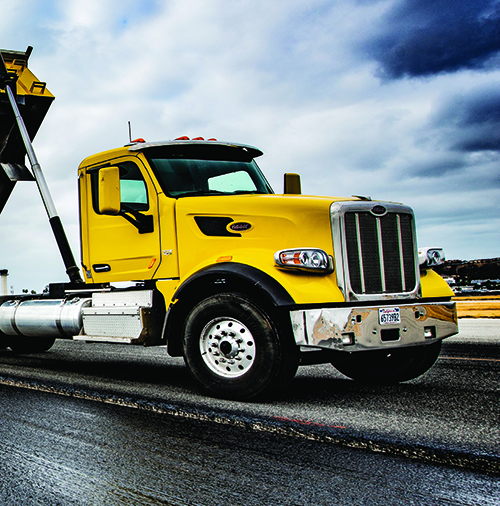Long Beach Airport Reconstructs Busiest Runway

Closing the most-used runway at one of the busiest airports in southern California requires a great deal of advance planning, teamwork and coordination. That was the challenge facing Jess Romo, airport director at Long Beach Airport (LGB), for the first nine months of 2018.

During that period, Runway 8R-26L was closed for a much-needed reconstruction. At 3,918 feet, it’s the airport’s shortest runway, yet it handles more than 220,000 operations per year. It is used primarily for general aviation, charter flights, corporate jets, flight schools, law enforcement and rescue operations.
“Besides serving as a commercial travel hub, our airport is a powerful economic engine that stimulates and supports both local and regional industries,” Romo explains. “A great deal of coordination was needed to redirect and continue operations while construction moved forward.”
|
facts&figures Project: Runway Reconstruction Location: Long Beach (CA) Airport 2017 Operations: 260,000 Commercial Passengers: 3.8 million Runway Rebuilt: 8R-26L Dimensions: 3,918 ft. long; width reduced from 150 to 100 ft. Cost: $19.1 million Funding: $15.3 million FAA; $3.8 million airport Project Timeline: 9 months Engineering Consultant: HNTB Construction Manager: Jacobs Engineering General Contractor: All American Asphalt Airfield Lighting: ADB Safegate Signs: Lumacurve Signs Related Project: Re-designating runway name to reflect slight shift in earth’s magnetic field |
During construction, all flights were diverted to LGB’s other two runways: 8L-26R and 12-30. Runway 8L-26R is the airport’s 6,192-foot east/west option; Runway 12-30, which runs northwest/southeast, provides 10,000 feet and is primarily used by commercial airliners and cargo jets.
Pre-Construction Prep
Planning for the project began before Romo was hired at LGB. “I started here in September 2016, but much of the groundwork had been done several years before,” he says.
In 2011, the airport hired engineering consultant HNTB to identify reasonable and practical measures for improving airfield safety and reducing runway incursions. The firm’s airfield geometry study yielded several recommendations that were adopted by the Long Beach City Council in 2014.
Officials then asked HNTB to conduct advanced planning on near-term safety improvements and prepare an airport layout plan that would receive FAA approval. The first major project in the plan was reconstructing Runway 8R-26L, in accordance with the recommendations from the prior planning studies.
Tony Fermelia, HNTB’s design project manager, explains the background circumstances: “There were numerous runway incursions at LGB. At the time, LGB had five runways. It had a large general aviation population and several flight schools with training ongoing constantly at the airport, and there were several near misses. Some of this was because of the geometric layout of the airfield. As the complexity of an airfield increases, the potential for pilots to lose situational awareness of their location on the airfield increases. By keeping the airfield geometry simple and meeting FAA design standards, pilots will be less likely to execute aircraft movements that can lead to a hazardous situation.
 “It was apparent to us that the airport didn’t need five runways,” he continues. “That made things difficult for the airport to maintain, the tower to control and the pilots to determine their location on the field. In addition, the main commercial runway (12-30) intersected Runway 26L-8R at an acute angle, which was dangerous. Therefore, we suggested shortening the runway to eliminate its crossing with air-carrier Runway 12-30, so there was no crossing or intersection of that main runway.”
“It was apparent to us that the airport didn’t need five runways,” he continues. “That made things difficult for the airport to maintain, the tower to control and the pilots to determine their location on the field. In addition, the main commercial runway (12-30) intersected Runway 26L-8R at an acute angle, which was dangerous. Therefore, we suggested shortening the runway to eliminate its crossing with air-carrier Runway 12-30, so there was no crossing or intersection of that main runway.”
Fermelia and his staff gave airport officials several options to consider, but repairing the pavement of 8R-26L was prioritized. “It had deteriorated over time, and was well past its expected lifetime,” he explains.
Several other additional enhancements also were recommended. For example, Runway 8R-26L was designed to Airplane Design Group (ADG) II runway standards, which require a minimum width of 75 feet. However, in an effort to improve safety and to visually distinguish it from adjacent 75-foot wide taxiways F and J, the HNTB team recommended increasing the width to 100 feet.
“I was pleased that the airport officials accepted our suggestion to add compliant run-up areas, sort of like a cul-de-sac,” Fermelia notes. “This area allows up to six general aviation aircraft at a time to warm up their engines. This is especially valuable at LGB, since there are so many students taking flying lessons.”

The new run-up area is about 50 yards by 25 yards—roughly half the size of a standard football field.
A few challenges cropped up during construction. “We had to avoid existing oil transition lines,” recalls Fermelia. “And there was a lot of clay that was encountered in the subgrade, which needed to be chemically treated to stabilize the material; it was like pudding. We had to treat subgrade material with a lime slurry. We also tried to improve and simplify the airfield lighting circuits and electrical pullboxes. As is the case in many airports, existing circuit routing and mapping had not been updated, and the maintenance staff didn’t have a good understanding of the existing conditions and which wires went where.”
Fermelia is especially proud that his team’s early planning and initial cost estimating effort were right on the mark. “I am very pleased that this whole project was delivered on time and on budget,” he comments.

Funding Sails Through
Securing FAA funds for the recommended improvements was an uncharacteristically smooth process, says Romo. “The HNTB team did an excellent job of helping us prepare our proposal and spelling out exactly what had to be done,” he explains. “That made a big difference.”
In August 2017, the FAA awarded LGB a $15.3 million grant that covered about 90% of the project’s eligible total cost. The airport paid for the remaining share, approximately $3.8 million.
Major improvements included:
- Reconstructed pavement
- Draining systems
- Signage
- Pavement markings
- Runway guard lights
- Reducing runway width from 150 feet to 100 feet
- Installing a new taxiway connector
- Connecting new run-up areas, where pilots can safely warm up small aircraft engines
- Constructing blast pads to prevent spreading debris from aircraft taking off and landing
- Grading infield areas
- Replacing existing lighting with LED lighting
In addition to the improvements above, the reconstructed runway had to be re-designated. For decades, it was designated 7R-25L, but the FAA required LGB to change it to 8R-26L due to natural shifts in the earth’s magnetic field. “An airport runway designation is not subjective, but rather tied to its orientation to a magnetic north compass heading,” Romo explains. “This is a key element for pilot awareness and safety.”
Naturally, the “sister” parallel runway was renamed for the same reason. It is now designated 8L-26R.
Decreasing the width of Runway 8R-26L from 150 feet to 100 feet was key to making many of the other improvements. “I think one of the best changes we made was narrowing the runway,” reflects Romo. “The standard at most airfields for short runways is only 75 feet wide. We used that space to improve the shoulder areas.”
No changes were made to the width of 12-30, LGB’s longest runway. It remains at 10,000 feet long and 200 feet wide.
Once funding was confirmed and the project was green-lighted, Romo and his staff had to prepare airport users for some unavoidable inconveniences. “We have a robust GA community, and 8R-26L is at the south side of the airport, where all the FBOs are located. Pilots liked the smallest runway, because it required the least amount of taxiing. When we asked them to use the two longer runways on the north side of the field, we did get some pushback because it would take them longer to taxi.
“We had to do a lot of communicating and messaging with all of our clients,” he continues. “Fortunately, most of the pilots knew the old runway was past its expiration date, and went along with our plan.”
Positive Outcome
The famously good weather in Long Beach helped the airport project run smoothly. “We were fortunate that during the nine-month construction process, there were very few delays. There were no weather issues, and all the stages of construction went according to plan,” Romo remarks.
With the project complete, reviews from customers have been good. “In the few months since we reopened 8R-26L, I have received positive feedback from our pilots and the FBOs,” he reports. “The changes we made definitely made the airport safer and more user-friendly.”
FREE Whitepaper
Fairbanks International Airport Baggage Transport Conveyor Enhanced With Mod Drive™ System
Airports face a host of unique industry challenges, such as meeting efficiency regulations and seeking out the best maintenance practices to reduce costs and keep operations flowing. In today’s current economic climate, any potential cost savings can go a long way.
In 2019, Alaska’s Fairbanks International Airport (FAI) sought to modernize its equipment and operations. They were dissatisfied with the performance of the gearmotors on their baggage transport conveyors and began searching for new suppliers. Regal approached FAI with a solution that could improve equipment performance and simplify maintenance, with the added benefit of energy cost savings: the Hub City® MOD Drive™ system.
This white paper discusses the hardware deployed, the test results and the annualized expectations for ROI.








